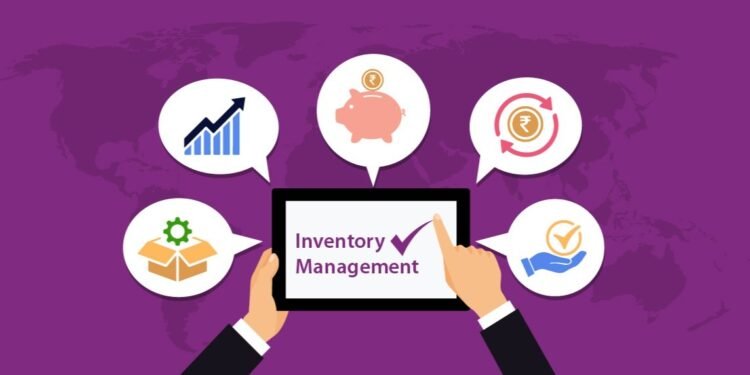Managing inventory can feel like juggling knives in the dark.
One wrong scan. One mislabeled box. One late shipment. That’s all it takes to mess up your entire operation. And when you’re trying to keep customers happy, workers sane, and margins tight? You don’t have room for guesswork.
That’s why more businesses are rethinking how they track what matters. Enter the barcode inventory system and its next-gen counterpart, RFID inventory tracking.
These aren’t just tools. They’re sanity savers.
The Barcode Inventory System: Reliable, Familiar, Still Fighting the Good Fight
For decades, the barcode inventory system has been the go-to for warehouses, retailers, and manufacturers. And you know what? It’s still solid.
Scan a code. Update your data. Done.
Simple, fast, and cheap. You don’t need fancy infrastructure. You just need a scanner and a plan. It’s the backbone of inventory for a reason, especially when your items are in clear view and don’t move too fast.
But here’s the thing. The world’s moving faster. Expectations are higher. And manual scanning, while efficient, still relies on human input. That means errors. That means delays.
So, what happens when your business outgrows barcodes?
RFID Inventory Tracking: The Upgrade You Didn’t Know You Needed
Imagine walking into a stockroom and knowing instantly what’s there, no scanning, no checking. Just real-time data, automatically updated down to the last unit. That’s RFID inventory tracking in action.
RFID tags don’t need line-of-sight. You don’t even need to stop what you’re doing. Items pass through a reader’s field, and boom data is captured. Movement tracked. Stock levels adjusted.
It feels like magic. But it’s just smart tech doing what it was always meant to do: make your job easier.
Lowry Solutions has been helping companies make this shift. Their approach isn’t about replacing barcodes overnight. It’s about layering intelligence, starting with RFID in critical zones and then expanding once the ROI becomes undeniable (which it usually does).
Barcodes vs. RFID: Do You Really Have to Choose?
Not at all. In fact, most companies don’t.
The barcode inventory system still shines in environments where simplicity matters, such as retail checkouts or slower-moving stockrooms. But RFID inventory tracking steps in where complexity starts to bite: high-volume fulfillment centers, automated picking lines, and high-value asset management.
They can work together.
Think of barcodes as the workhorse. RFID as the racehorse.
When you combine them, you get a system that’s flexible, accurate, and responsive, able to grow with your business, not against it.
Inventory Without Friction: A Different Kind of Dream
Imagine this:
A shipment arrives. Instead of manually scanning each item, the whole pallet rolls through an RFID gate. Every product is counted. Location logged. Alerts are fired if anything’s missing.
A customer places a rush order. Your system already knows exactly where that item is, when it was last moved, and how fast it can get out the door. No searching. No, “I think it’s in aisle 12.” Just certainty.
That’s the power of RFID inventory tracking and why so many businesses are moving toward it.
Because, at a certain point, precision isn’t a luxury. It’s survival.
The Hidden Costs of Getting It Wrong
Let’s talk numbers.
Lost inventory. Discounts. Overstocking. Understocking. Manual audits take days, and things are still missing. All of it adds up. Not just in dollars but in trust—between teams, with customers, and across supply chains.
A basic barcode inventory system can reduce those risks. But RFID? RFID takes them off the table entirely.
You don’t just find problems. You prevent them.
And when every second counts, that prevention becomes priceless.
Real Stories, Real Impact
It’s one thing to talk tech. It’s another to see what it does in real life.
Lowry Solutions helped a large manufacturer shift from manual counts to RFID inventory tracking across their warehouse network. What used to take 48 hours now happens in under five. Accuracy? Up by 99%. Shrinkage? Practically gone.
Or take a regional retailer using a barcode inventory system paired with RFID in high-value departments. Theft dropped. Stockouts vanished. Employee stress went down. Customers noticed.
That’s what these systems do. They don’t just make your inventory better; they make your whole business smarter.
The Future Isn’t Either/Or, It’s Both
If you’re still using spreadsheets and paper logs, you already know the pain. If you’re relying only on barcodes, you’ve probably started to feel the strain.
And if you’re already dabbling in RFID? You’ve seen the light.
The truth is, there’s no one-size-fits-all. Every business has its own rhythm, its own chaos. What matters is building a system that works with you, not against you.
Sometimes, that means sticking with a barcode inventory system where it makes sense. Sometimes, it means bringing in RFID inventory tracking when you need real-time visibility. Often, it’s both.
And that’s the beauty of it. You don’t have to pick a side. You just have to start listening to your operation and trust the data to tell you where to go next.




